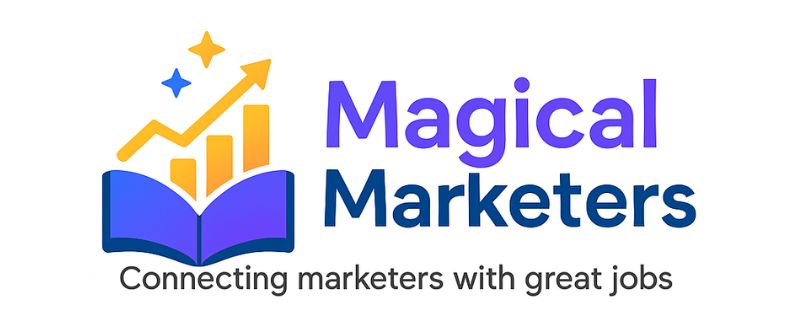How to Boost Your Google Discover Visibility?

In today’s fast-paced digital world, being featured on Google Discover can significantly increase your content’s visibility. If you want to get your content noticed, it’s crucial to understand how Google Discover works and how you can optimise your content to fit its unique algorithm.
Unlike Google Search, where you rank for keywords, Google Discover works differently. It doesn’t focus on traditional SEO practices like keyword ranking. Instead, your content is selected based on algorithmic signals that Google Discover uses to decide which content appears on a user’s feed.
So, how can you ensure your content gets the visibility it deserves? Let’s dive into the key ranking signals that can help increase your Google Discover visibility naturally.
What Makes Google Discover Different?
Google Discover is a powerful tool that curates personalised content for users, based on their browsing behaviour, interests, and search history. It’s not about ranking for specific keywords. Rather, it’s about how your content performs and resonates with users. Discover places an emphasis on engagement, relevance, and user experience, which means it’s your content’s real-world performance that matters.
Instead of traditional search queries, Discover serves content to users that they might find interesting. It’s about offering content that aligns with their preferences and interests. But getting your content into Google Discover is no easy feat. You need to understand the algorithm and optimise your content for the signals that Google values the most.
Core Ranking Signals for Google Discover
To succeed on Google Discover, you need to focus on a few key ranking signals that Google uses to determine which content deserves a spot on a user’s feed. Here are the primary signals that can help your content get discovered:
E-E-A-T: The Power of Experience, Expertise, Authoritativeness, and Trust
Google has always emphasised the importance of E-A-T (Expertise, Authoritativeness, Trustworthiness), and now with the inclusion of Experience, the concept has evolved into E-E-A-T.
Here’s what each part of E-E-A-T means in the context of Google Discover:
- Experience: Google values content written by someone with real-world experience on the topic. If you’re writing about a specific subject, make sure to bring personal insights and experiences to make your content more authentic.
- Expertise: Content should come from experts who have a deep understanding of the subject matter. Whether it’s a well-researched article or a topic you’re highly knowledgeable about, make sure your content reflects expertise.
- Authoritativeness: Google wants to ensure that the content is recognised by credible sources. This can include links to trusted websites or mentions by authoritative voices in your field.
- Trustworthiness: Your content should be reliable, accurate, and free of misleading or biased information. Trust is crucial for ranking well in Discover, and it’s something Google values highly.
Engagement Metrics: The Key to Discover Success
Google Discover heavily relies on engagement signals to determine which content resonates with users. These signals include:
- Click-through Rate (CTR): The higher your CTR, the more likely Google will promote your content. It’s a clear indicator that users find your content interesting and valuable.
- Time-on-Page: When users spend more time reading your content, it signals to Google that your content is worth their attention.
- Return Visitors: If users return to your content repeatedly, Google recognises it as quality content that builds trust and loyalty.
To boost engagement, make sure your content is both visually appealing and interesting. This leads us to the next point.
The Role of Visuals and Headlines
Since Google Discover is a highly visual platform, you need to capture attention immediately. Users scroll through their feeds quickly, so your content needs to stand out with eye-catching images, engaging videos, and compelling headlines.
- Headlines: Craft headlines that are both engaging and accurate. Clickbait might grab attention initially, but it will lead to a high bounce rate. Your headline should reflect the essence of your content to avoid misleading your readers.
- Visuals: Strong visuals like images, infographics, and videos are crucial for driving engagement. Ensure that your visuals are optimised for mobile, as Google Discover is a mobile-first platform. High-quality images and interactive elements will increase the chances of your content being clicked on.
Technical SEO and Mobile Optimisation
While you don’t need to “rank” in the traditional sense, your website must be optimised for speed, mobile, and usability. Here are some essential technical aspects to focus on:
- Fast Load Times: Google prioritises content that loads quickly. A slow-loading page can result in a poor user experience and a decrease in Discover visibility.
- Mobile-Friendly Design: Since Discover is only available on mobile, your content must be optimised for mobile devices. Use responsive design to ensure a seamless experience across different screen sizes.
- Structured Data: Structured data helps Google understand the context of your content. By adding relevant tags and schema markup, you make it easier for Google to categorise your content, improving its chances of being recommended to the right audience.
Freshness and Topical Relevance: Keeping Content Timely
Content that is fresh and relevant has a higher chance of being featured in Google Discover. Google favours content that is:
- Accurate: Ensure your content is factual, well-researched, and free from errors.
- Timely: Stay up-to-date with current events or trending topics. Content tied to real-time events or emerging trends has a higher chance of appearing on Discover feeds.
- Helpful: Content should address users’ pain points and provide solutions.
- Updated Regularly: Keep your content fresh by updating old articles with new information. Google values content that is continuously relevant.
To identify trends, use tools like Google Trends, Google Autocomplete, and Related Searches to monitor what’s currently being searched and discussed.
How Google Discover Works: The Engagement Loop
Once your content meets the required signals, it’s time for it to enter Google Discover. Here’s how the process works:
- Your content is featured in Discover based on signals like E-E-A-T, engagement, visuals, etc.
- Users engage with your content through clicks, shares, and time spent on the page.
- Google collects engagement data (e.g., CTR, time-on-page) and determines if your content fits well with users’ interests
- As your content receives positive engagement, it gets more visibility, and the cycle repeats, driving even more traffic.
This positive loop boosts the chances of your content getting discovered by even more users.
How to Create a Positive Feedback Loop
The key to success on Google Discover is to build a dedicated readership. This can be achieved by:
- Using push notifications to alert your audience when new content is published.
- Promoting engaging, fresh, and high-quality content consistently.
- Encouraging repeat visits to your website by keeping your content updated and relevant.
Using Push Notifications to Increase Google Discover Visibility
Many publishers overlook the potential of push notifications. However, when used properly, they can significantly enhance your content’s visibility and engagement. Here’s how:
- Increase CTR: Push notifications give your content an instant boost by driving quick engagement.
- Encourage Repeat Visits: By notifying your audience of fresh content, you bring them back, which improves your content’s engagement metrics.
- Create a Hybrid Push Strategy: Combine editorial updates with some promotional content, making it feel fresh and less like an advertisement. This increases engagement while maintaining a good user experience.
Push notifications help create the necessary engagement signals that Google Discover values, and when used wisely, they can amplify the positive loop we discussed earlier.
Creating a Discover Strategy That Works
Getting featured on Google Discover isn’t about luck. It’s about understanding the algorithm and using it to your advantage. Focus on delivering high-quality content, optimising for mobile, and encouraging user engagement through the right strategies. Incorporate E-E-A-T principles, create visually appealing content, and leverage tools like push notifications to drive repeat visitors and boost your engagement metrics.
By following these guidelines and maintaining a consistent content strategy, you can naturally increase your chances of being featured on Google Discover, enhancing your reach and visibility in no time. So, start optimising your content today and let Google Discover work its magic for you.
Calling all Marketers!
🔴 Are you tired of searching for the perfect job?
Whether you're into content writing, SEO, social media, graphic design, or video editing—full-time, freelance, remote, or onsite—we've got your back!
👉 We post over 30 job opportunities every single day. Yes, every day (all verified).
Join the most reliable and fastest-growing community out there! ❤️
And guess what? It’s FREE 🤑
✅ Join our WhatsApp Group (Click Here) and Telegram Channel (Click Here) today for instant updates.







